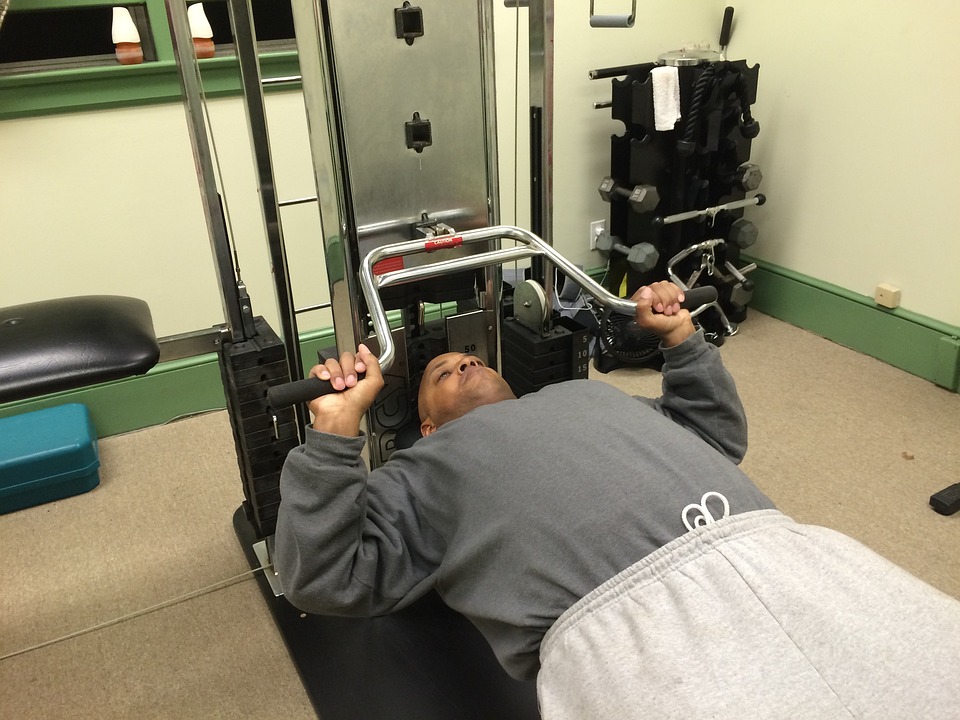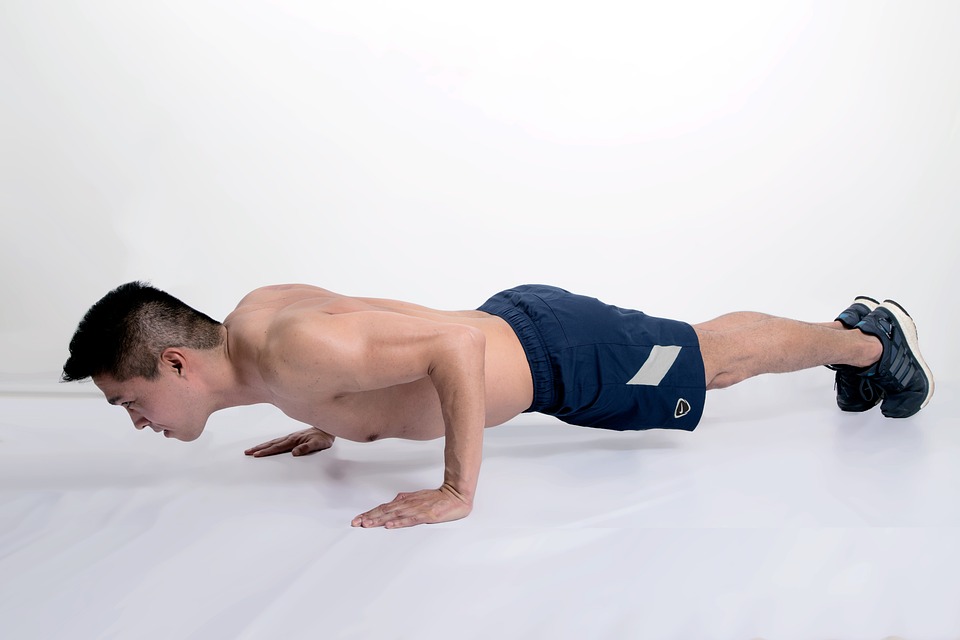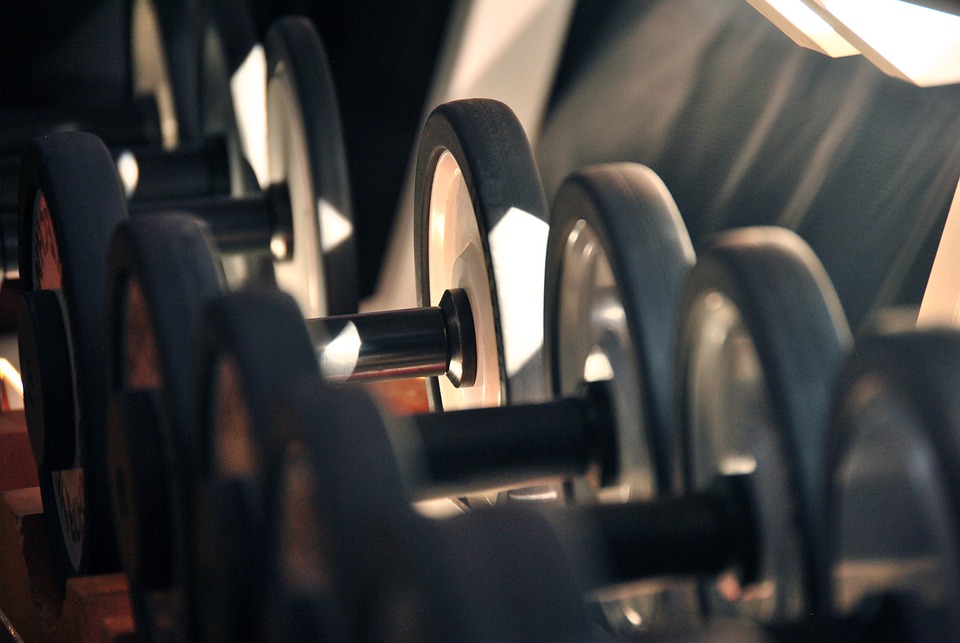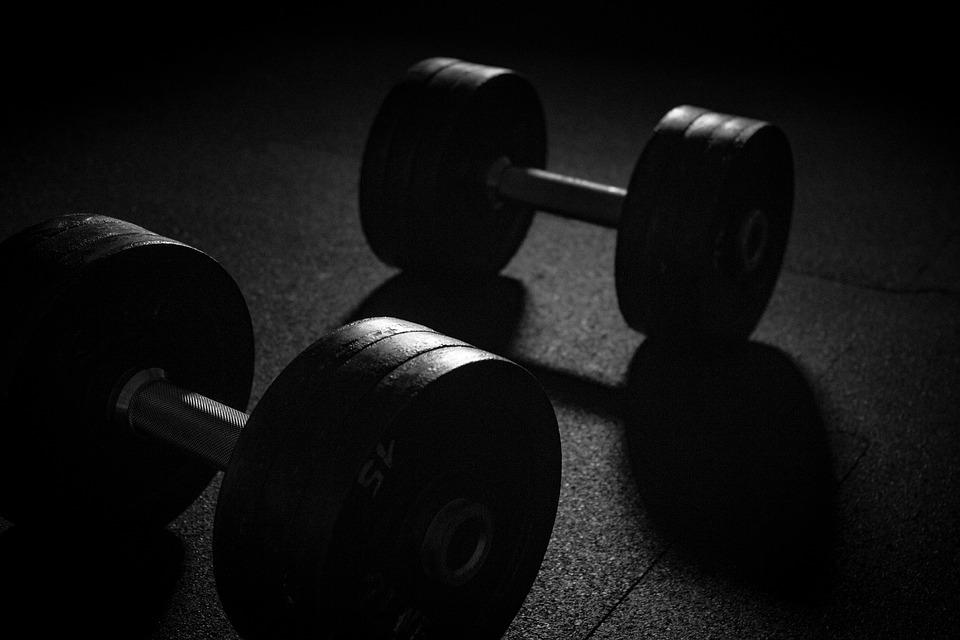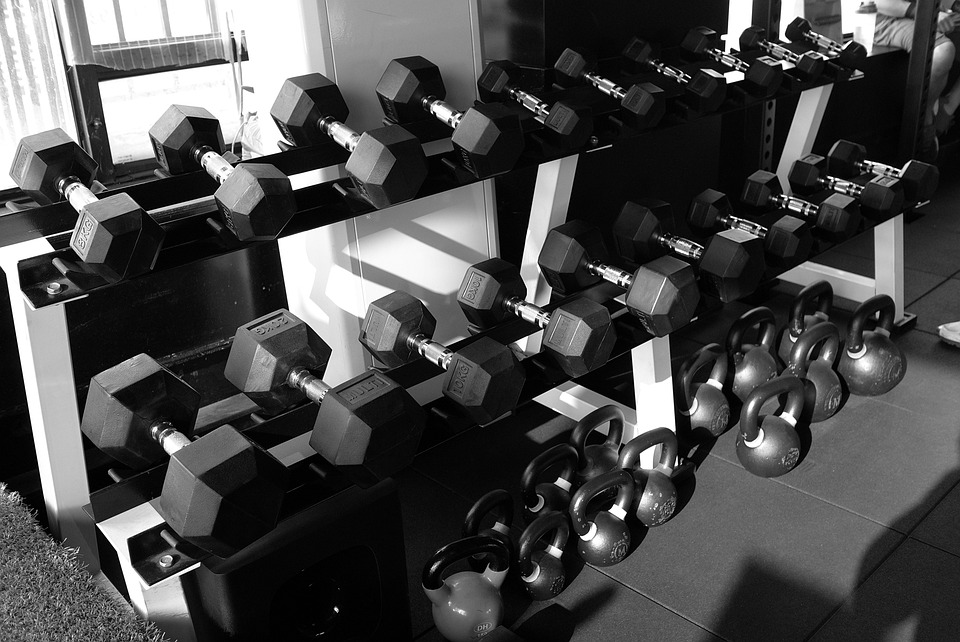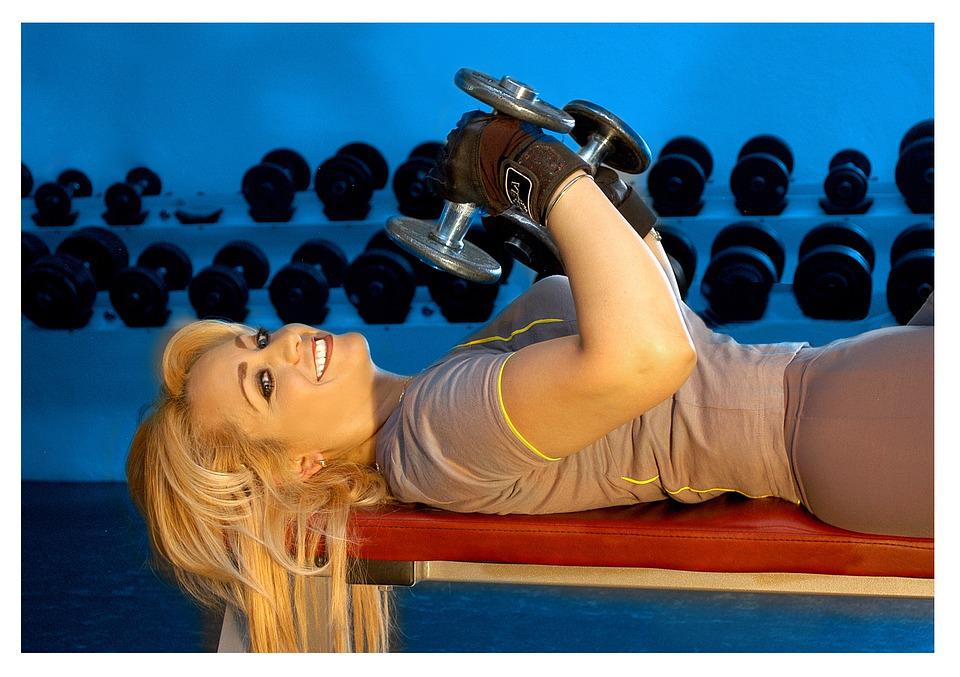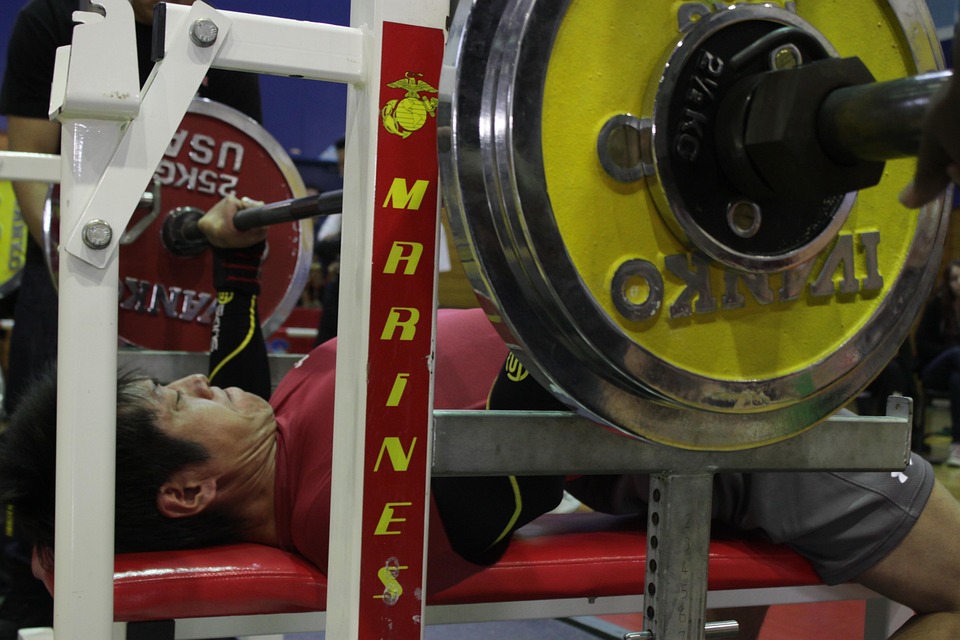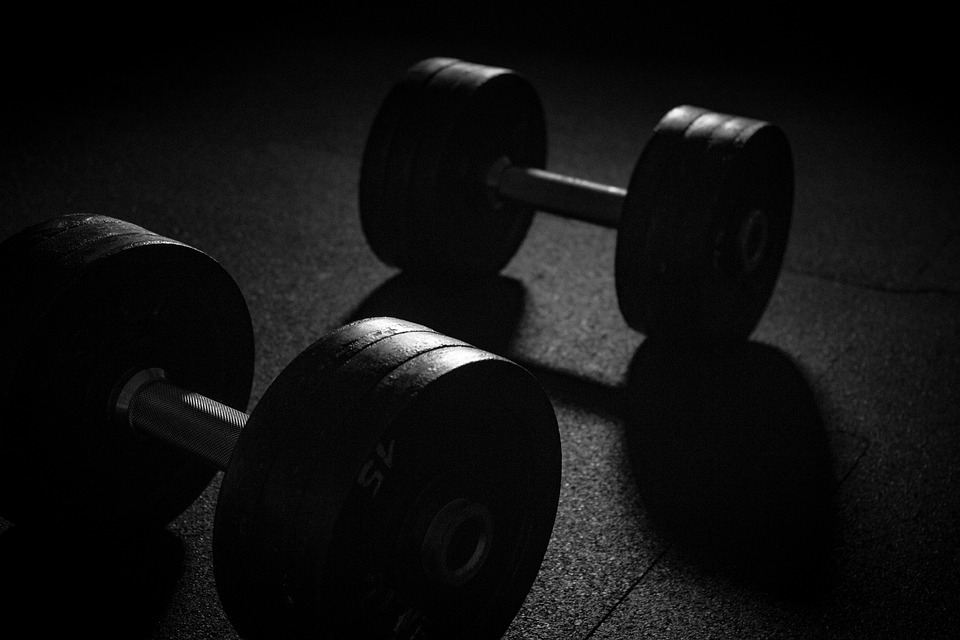
Here is a brief overview of the dumbbell version of one of the most popular barbell exercises, which is often overlooked.
How to Do the Dumbbell Bench Press
Dumbbells allow for a greater range of motion and provide a different shoulder and elbow position, which makes the exercise more effective for building muscle.
Get into a Pressing Position
lie on a flat bench and hold a dumbbell in each hand with your palms facing each other Pull your shoulder blades back into the bench. Your hips and shoulders should be in line with each other Stand with both feet on the ground, with your feet directly under your knees. Your hips and shoulders should be in line with each other.
Your body should be in a straight line from your glutes to your head, and your shoulders should be touching the bench. Bend your elbows and curl your hands towards your chest.
When you are lying on the bench, you should feel like there are six points of contact with your body – both feet on the ground, your tailbone, both shoulders and your head. This will give you the most stability. This means that you are ready to start the exercise.
Drive the Weights Up
Grasp the dumbbells so your palms are facing your feet, with your wrists directly above your elbows. Raise your elbows up to the ceiling in a straight line until the dumbbells are positioned directly above your pecs. You should not touch the dumbbells at the top of each repetition.
To maintain proper form while performing a push-up, stack your elbows directly under your wrists, keeping your body in a straight line from your head to your heels before you drive up. If you let your wrists and the weights go past the level of your elbows, you’re more likely to injure yourself.
Lower into a Stretch
Slowly lower the dumbbells while keeping your shoulder blades pulled back and down. To maintain correct form while bench pressing, keep your elbows pointed out at a 90-degree angle from your body, perpendicular to the ground. When holding the dumbbells outside your chest, try to emphasize the feeling of your pecs stretching.
Focus on pulling the weights toward you while keeping your chest lifted.
What Are The Benefits of Working My Chest With Dumbbells?
According to Dr. John Rusin, a strength and conditioning coach and author of Functional Hypertrophy Training, it is twice as difficult to stabilize two weights in your hands than it is to stabilize one. He says that it is good that the smaller muscles in your shoulder joints learn to stabilize the joints. The big muscles mainly work to control the weights and prevent them from drifting. Dumbbell training offers the following benefits for chest gains.
Dumbbells allow a greater range of motion. When performing bench presses with a barbell, you will not achieve a full stretch in your pectoral muscles unless the bar hits your chest. If your goal is to lift the heaviest weight you can, that’s not too bad. If you want to be bigger and more athletic, you should use dumbbells rather than a barbell. This is because dumbbells let you lower the weight past your chest, which stretches your pecs more and activates more muscle fibers. The study found that those who lifted with a larger range of motion increased their muscle growth by about 2.5 times compared to those who lifted with a smaller range of motion.
Dumbbells place less stress on your joints. The human body may look symmetrical, but it is not. There are slight differences in your shoulders, hips, wrists, and other joints from one side to the other. When you force the body to move with perfect symmetry, one side of the body will always take on more stress than the other. If you often do this, the joints on that side will start to hurt.
Dumbbells allow both sides of your body to work independently, which can help you find your optimal path when performing an exercise. The exercise can be customized for your body by rotating your wrists, elbows, and shoulders. The stress of the exercise should be in your muscles, not your joints.
Dumbbells give you balanced development and strength. This builds on our last point. Even though you may feel like you are pushing with equal force on the barbell bench press, humans are very good at compensating by putting more stress on their stronger side while favoring their weaker one. If you want to achieve an even weight distribution while using dumbbells, your right and left sides must generate the same amount of force. Deviations from this will be immediately noticeable. This ensures that you never push a set farther than your weaker side can handle. This prevents injury and keeps your workout balanced. Eventually, the strength on your two sides evens out.
Dumbbells work the pecs harder. When you press a dumbbell up, your chest muscles have to work to keep the weight from moving out. You don’t need to worry about that when you’re holding onto a steel bar. A study done in 2017 found that dumbbell bench presses are more effective in activating the pectoralis major muscle than both the barbell bench press and the Smith machine bench press.
Dumbbell Bench Press Mistakes to Avoid
When using dumbbells, you have more freedom at the shoulder joint, which means you have to control and coordinate the exercise more. Some errors to avoid when performing the dumbbell bench press are not arching your back, not locking your elbows, and not flaring your elbows.
Having an Unstable Body
The following text discusses how common it is to see weight lifters make common mistakes such as placing their feet in the air, crossing their ankles, or raising their head, neck, and upper back during the exercise.
Less contact with the bench and ground makes you less stable, and not being able to push with your legs reduces your power.
This will help you maintain balance and create more force. Your lower body muscles should all be tense and engaged. Make sure your head is touching the bench to create tension in your upper back.
Ego Lifting
Some weight lifters think that just because they are able to bench press heavy weights with a barbell, they are supposed to be able to lift low weights with extremely heavy dumbbells.
What they fail to realize is that dumbbells involve the smaller stabilizer muscles of the shoulder more than a barbell. This means that excessively heavy weights can strain the shoulder joint and decrease chest muscle recruitment.
Being egoistic will not help you when working out with dumbbells, so it is best to leave your ego at home. Now perform 5-10 explosive yet strict reps For your barbell bench press, cut the weight in half and then take off another 5-10kg (10-20 pounds). Now perform 5-10 explosive yet strict reps A good starting point for the total weight of the dumbbells would be 10-15% of your body weight.
What Chest Exercises Can I Do With Dumbbells?
Upper Chest:
1. Slight Incline Dumbbell Bench Press
Step 1: Elevate one end of a flat exercise bench on two or three heavy barbell plates, or a small box or step. The angle should ideally be 30 degrees or less.
Lie back on a flat bench with a weight in each hand, arms extended straight up above your chest.
Bend your elbows slowly and bring your shoulder blades together while you are lying on the bench. Lower the dumbbells until they are close to your chest. Your elbows should be at a 45-degree angle to your torso when your arms are down, not straight out to the sides.
Pause in the stretched position, and then press the dumbbells back up while flexing your chest.
Sit on the bench so your hips and knees are bent at 90-degree angles Standard incline bench presses put your hips in a flexed—or bent—position, says Rusin. To do this exercise correctly, sit on the bench so your hips and knees are bent at 90-degree angles. When you do this exercise without lifting your legs, it takes your lower body out of the equation and only works your upper body. You can perform a flat barbell bench press with leg drive by elevating the bench just a little bit. This change allows you to use more of your body, which will help you lift heavier weights.
The incline at this angle also works with the pec fibers that attach to the clavicle more strongly.
2. Incline Fly-Press
Step 1: Elevate one end of a flat exercise bench on two or three heavy barbell plates (the same as you did for the incline press described above).
Lie back on the incline bench with your head at the top, holding two dumbbells, palms facing in, at arm’s length above your chest.
Slowly lower the dumbbells out to the sides, bending your elbows and squeezing your shoulder blades together until your chest is stretched and your elbows are at about a 90-degree angle. If your shoulder hurts when it is fully stretched out, limit how far you stretch it.
Step 4: Return to the starting position by contracting your pecs and fully straightening your arms.
Standard flyes are good for building muscle, but they are hard on the shoulders. Rusin suggests bending your arms as you lower the weights in order to keep the stress on your pecs while taking it off the shoulder joints.
Middle and Inner Chest:
3. Crush Press (aka Squeeze Press)
Step 1: Lie back on a flat exercise bench holding two heavy dumbbells on your chest, palms facing one another.
In your starting position, press the dumbbells together in the center of your chest.
Holding the dumbbells together, slowly push them away from your chest until your arms are straight. Pause for a moment, squeezing your chest muscles.
Return to the starting position by slowly reversing the movement.
Squeezing the pecs hard in a shortened position forces them to contract. This contrast is good because it emphasizes a stretch on the muscles. You will get a similar effect to cable crossovers if you squeeze hard at the top on crush presses, without needing two fancy cable stations.
4. Fly-Press
Position yourself on a bench with your back flat against it and hold two dumbbells over your chest with your arms extended and your palms facing each other. This is your starting position.
Slowly lower the dumbbells out to the sides, keeping your elbows at about a 90-degree angle, until your chest is stretched and your shoulder blades are squeezed together. If your shoulder hurts when it is fully stretched, you should not stretch it as far.
To complete the exercise, reverse the motion by contracting your pecs and straightening your arms until you are back in the starting position.
While flyes do work the triceps to some degree, they primarily focus on the pecs and work them the hardest in the fully stretched position where the most muscle fibers can be recruited.
Lower Chest:
5. 45-Degree Dumbbell Floor Press
Step 1: Lie on your back on the floor, holding two dumbbells at arm’s length over your chest. There are two ways to do this exercise: you can lie down on your back and have someone hand you the dumbbells, or you can sit up and grab them off the ground yourself.
Step 2: Rotate your wrists so that the thumb side of your hands is closer together than the pinky side (as if holding a steering wheel at ten and two o’clock). This is your starting position.
Slowly lower the weights until your triceps touch the floor.
Press the weights back to the starting position.
The floor press is a variation of the standard press that is performed lying on the floor instead of standing. This exercise works the pecs when they are in a shortened position. The little stretch on the shoulders results in a good range of motion for people with shoulder pain.
6 Feet-Up Slight Decline Dumbbell Bench Press
Place a flat exercise bench on top of two or three heavy barbell plates in order to elevate one end.
Lie back on a bench with your head at the lower end and hold two heavy dumbbells at arm’s length above your chest. Place your feet flat on the bench.
Bend your elbows slowly and bring your shoulder blades together while you are lying on the bench. Lower the dumbbells until they are close to your chest.
Pause in the stretched position with the dumbbells extended, and then press them back to the starting position.
The slight decline works the pecs while the shoulders are in a central—or neutral—position. A decline angle recruits more of the muscle fibers that connect to the sternum, while a balanced position allows for maximal muscle drive. Want to load up on a chest exercise? Choose this one. Doing presses with heavyweight is not as safe as doing them with a lighter weight.
Who Should Do the Dumbbell Bench Press
Bodybuilders and Physique Enthusiasts
Analyzing the bench press from a strength, muscle-building, and pec-shaping perspective, this exercise is hard to beat. The dumbbell bench press is an effective exercise for people who want to increase their strength, build muscle, or improve the shape of their chest.
The dumbbell bench press is a great exercise for building muscle in the chest because it keeps the muscles under tension for a long time and activates them more than other exercises.
Strength Athletes
The dumbbell bench press is a good exercise to use as an accessory to the barbell bench press for competitive powerlifters. This is because it allows the same pressing muscles to be trained without causing wear and tear on the joints from the barbell’s repetitive use.
Using dumbbells for bench presses rather than a barbell can help improve strength for overhead athletes by reducing muscle discrepancies and allowing for more unilateral training.

